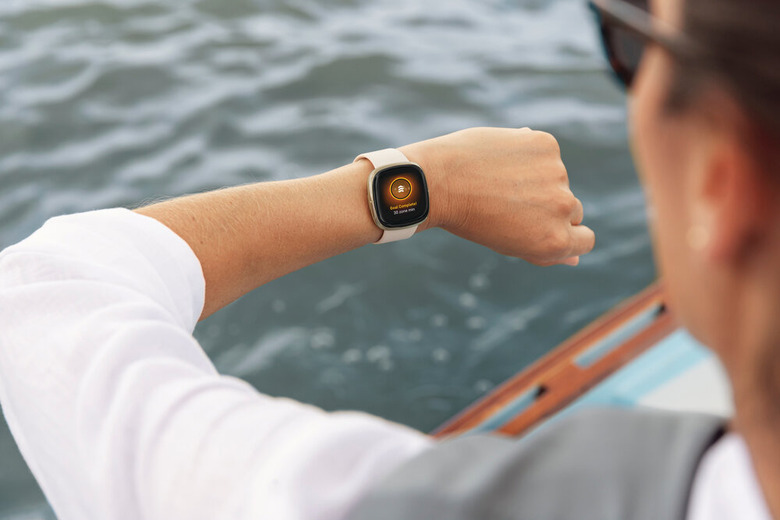Fitbit Just Beat Apple Watch To The Punch With This Brilliant New Health Feature
- Fitbit users can now track their blood glucose within the Fitbit app, ahead of a similar feature expected to come to the Apple Watch Series 7 later this year.
- Fitbit announced this new feature on Monday. Apple, meanwhile, is expected to add a sensor to the Apple Watch Series 7 that monitors blood glucose.
- This comes as wearables like Apple Watch and Fitbit devices continue to pack in loads of new health technology that can prolong and potentially save their user's life.
When the Apple Watch Series 7 launches later this year, one of the rumored features that people are expecting to see based on leaks and other rumors about what's coming to make the wearable better than ever is a blood glucose sensor. A Korean report has already teased the inclusion of this sensor in the next Apple Watch model as a kind of natural next step, following Apple's addition of an ECG function to the watch in 2018, as well as the ability to detect the irregular heartbeat known as Afib that can lead to serious medical problems. And then last year, we saw the Apple Watch Series 6 get the ability to track blood oxygen saturation — an important health metric to track, given that low oxygen saturation levels can be a sign of COVID-19. That's why pulse oximeters quickly sold out online in the early days of the pandemic last year.
Next up is the Apple Watch Series 7, which ET News notes will be able to measure blood sugar (with this feature also coming to the Samsung Galaxy Watch 4, the same report notes). Apple, for its part, has "the related patent technology secured," according to the report, with the iPhone maker currently focused "on ensuring reliability and stability prior to making the technology available." This brings us to Fitbit, which now allows users to manually track their blood glucose levels.
In a company blog post, Fitbit explains how to use this new feature: "Head to the Fitbit app to start logging your blood glucose levels and related symptoms to see trends in your data. You can also connect your OneTouch Reveal™ app from LifeScan (other meters/apps coming soon) with your Fitbit app to automatically import your blood glucose levels."
In the app, the post continues, you can set a personalized range to know when your glucose level is above, below, or within your set range "and to help you see how your daily habits may impact your blood glucose levels." You can also choose to get Fitbit app reminders to log your blood glucose levels, with the app helping you spot trends thanks to graphs that track your stats and changes.
"You can also enable your Fitbit device to receive app notifications from Fitbit to see these reminders right on your wrist," the post adds. "Plus, for Fitbit Premium + Health Coaching participants, tracking your blood glucose in the Fitbit app can help your Health Coach learn more about your behaviors and adjust your action plan to help keep you accountable."
Needless to say, it is fantastic that the companies behind the most popular wearable devices are pushing their respective technologies and devices forward, adding new benefits that could prolong and potentially save your life. In related news, recent studies from both Stanford University and Mount Sinai Health System reveal that wearables like Apple Watch, Fitbit devices, and others can pick up on the signs of a COVID-19 infection days before the user actually detects their own symptoms.
